So MANY Uses for the ENTIRE Rhubarb Plant!
Thanks to a cooler-than-usual spring, we still have good quality rhubarb in the garden. Yay and yippee, because this is such a fun plant with which to experiment.
I’ve talked about its health benefits before: rhubarb is exploding in fiber, antioxidants, vitamins, minerals, trace elements, and phytonutrients.

And talk about versatile. For instance, my good friend and neighbor, Rachelle, makes a Finnish fruit soup with it. Other neighbors specialize in strawberry-rhubarb pie. A favorite bakery offers rhubarb and oatmeal cookies. I like to puree cooked rhubarb and mix it into ginger ale for a pretty and unusual party drink. I know folks who make chutney with it. And it’s divine when sweetened and dolloped over vanilla ice cream! Truly, its uses go on and on.
But perhaps one of the best ideas I’ve seen lately is making a quick bread with it. I first read about this is THE OLD FARMERS ALMANAC, and then I saw an article in THE NEW YORK TIMES all about it. Clearly the idea was catching on.
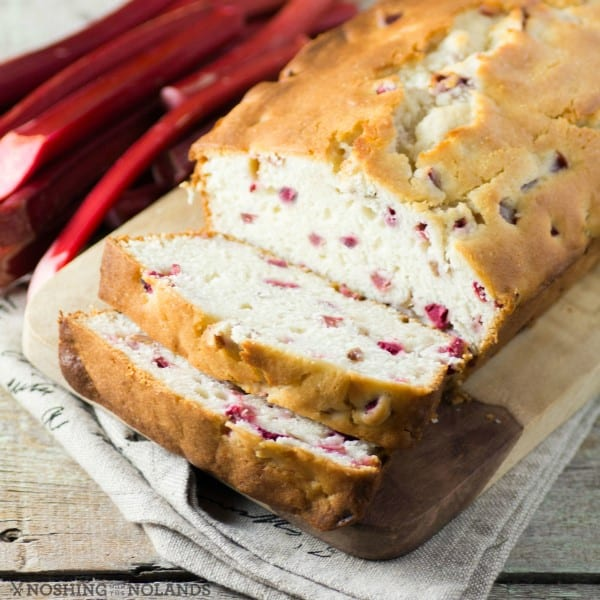
The TIMES introduced the idea with this: “A bit sour on their own, rhubarb stalks work beautifully with sweet strawberries and blueberries, and citrus. This buttery loaf is made with a bit of orange zest, which perfectly complements its pleasant tang. Dress the cooled loaf with a simple glaze of confectioners’ sugar and orange juice, if you like, or serve fat slices with vanilla ice cream. Leftovers are nice toasted in a skillet in plenty of salty butter served with raw honey.”
Here's the TIMES’ recipe. See if this doesn’t become a spring favorite.
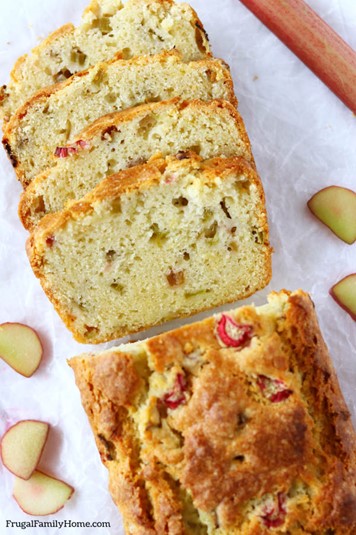
8 tablespoons 113 grams unsalted butter (1 stick), melted, plus more for the pan
1 cup 200 grams plus 2 tablespoons granulated sugar
1 tablespoon freshly grated orange zest
1/3 cup whole-milk yogurt
2 large eggs
1 3/4 cups 223 grams all-purpose flour plus more for dusting the buttered pan
1 teaspoon baking powder
1/2 teaspoon baking soda
1/2 teaspoon kosher salt
1 3/4 cups 227 grams chopped rhubarb (8 ounces) cut into very small pieces (1/8- to ¼-inch)
Directions:
Add Recipe to Cook'n
I’ll conclude with a rhubarb subject that comes up once in a while: Can the leaves be used for anything? It’s a good question, since the prevailing wisdom is that the leaves are poisonous. Yes, it’s all true. Besides being super high in oxalates, they contain a compound called anthraquinone glycoside.
BUT, while rhubarb leaves aren’t edible, there are several ways you can use them for non-food purposes. For instance:
I’ve talked about its health benefits before: rhubarb is exploding in fiber, antioxidants, vitamins, minerals, trace elements, and phytonutrients.

And talk about versatile. For instance, my good friend and neighbor, Rachelle, makes a Finnish fruit soup with it. Other neighbors specialize in strawberry-rhubarb pie. A favorite bakery offers rhubarb and oatmeal cookies. I like to puree cooked rhubarb and mix it into ginger ale for a pretty and unusual party drink. I know folks who make chutney with it. And it’s divine when sweetened and dolloped over vanilla ice cream! Truly, its uses go on and on.
But perhaps one of the best ideas I’ve seen lately is making a quick bread with it. I first read about this is THE OLD FARMERS ALMANAC, and then I saw an article in THE NEW YORK TIMES all about it. Clearly the idea was catching on.

The TIMES introduced the idea with this: “A bit sour on their own, rhubarb stalks work beautifully with sweet strawberries and blueberries, and citrus. This buttery loaf is made with a bit of orange zest, which perfectly complements its pleasant tang. Dress the cooled loaf with a simple glaze of confectioners’ sugar and orange juice, if you like, or serve fat slices with vanilla ice cream. Leftovers are nice toasted in a skillet in plenty of salty butter served with raw honey.”
Here's the TIMES’ recipe. See if this doesn’t become a spring favorite.

Rhubarb Bread
Ingredients:
8 tablespoons 113 grams unsalted butter (1 stick), melted, plus more for the pan
1 cup 200 grams plus 2 tablespoons granulated sugar
1 tablespoon freshly grated orange zest
1/3 cup whole-milk yogurt
2 large eggs
1 3/4 cups 223 grams all-purpose flour plus more for dusting the buttered pan
1 teaspoon baking powder
1/2 teaspoon baking soda
1/2 teaspoon kosher salt
1 3/4 cups 227 grams chopped rhubarb (8 ounces) cut into very small pieces (1/8- to ¼-inch)
Directions:
Step 1: Heat the oven to 350 degrees. Butter and flour an 8½-inch-by-4½-inch loaf pan.
Step 2: In a large bowl, whisk together the butter, 1 cup of the sugar, orange zest and yogurt until well combined. Whisk in eggs. In a separate medium bowl, whisk together the flour, baking powder, baking soda and salt. Add the flour mixture and 1½ cups rhubarb to butter mixture and fold until combined. Transfer the batter to the prepared pan and smooth out the top. Sprinkle the top with the remaining ¼ cup rhubarb and 2 tablespoons sugar. Bake until the loaf is golden brown and set and a skewer inserted in the center comes out with moist crumbs attached, 55 to 60 minutes.
Step 3: Transfer the pan to a rack to cool for 10 minutes, then cut around the edges and carefully flip the loaf out of the pan. Turn it right side up and let it cool completely before slicing.
Step 2: In a large bowl, whisk together the butter, 1 cup of the sugar, orange zest and yogurt until well combined. Whisk in eggs. In a separate medium bowl, whisk together the flour, baking powder, baking soda and salt. Add the flour mixture and 1½ cups rhubarb to butter mixture and fold until combined. Transfer the batter to the prepared pan and smooth out the top. Sprinkle the top with the remaining ¼ cup rhubarb and 2 tablespoons sugar. Bake until the loaf is golden brown and set and a skewer inserted in the center comes out with moist crumbs attached, 55 to 60 minutes.
Step 3: Transfer the pan to a rack to cool for 10 minutes, then cut around the edges and carefully flip the loaf out of the pan. Turn it right side up and let it cool completely before slicing.
Recipe formatted with the Cook'n Recipe Software from DVO Enterprises.
I’ll conclude with a rhubarb subject that comes up once in a while: Can the leaves be used for anything? It’s a good question, since the prevailing wisdom is that the leaves are poisonous. Yes, it’s all true. Besides being super high in oxalates, they contain a compound called anthraquinone glycoside.
BUT, while rhubarb leaves aren’t edible, there are several ways you can use them for non-food purposes. For instance:
- WEED BARRIER. The large leaves can be spread around any area where you’d like to suppress weeds. Layer them to cover the soil completely. They break down quickly, though, so you’ll need to add more throughout the season. As they decompose, they’ll add nutrients to the soil.
- PESTICIDE. Rhubarb simply isn’t bothered by pests. Some garden scientists say this is because the compounds that make rhubarb leaves toxic to us also make them unappetizing to leaf-destroying insects. While there isn’t a ton of research to back this up, it can’t hurt to try.
To make a DIY insecticide for garden plants, tear up a few rhubarb leaves and place them in a large stockpot. Cover with water, put the lid on the pot, and bring to a boil. Turn off the heat and allow to steep for at least a half an hour.
Next, strain out the leaves and put in a spray bottle, diluting with one part water. Add a squirt of dish soap to help the spray adhere to plants. Try spraying plants you’re trying to protect daily and see if it helps repel unwanted insects.
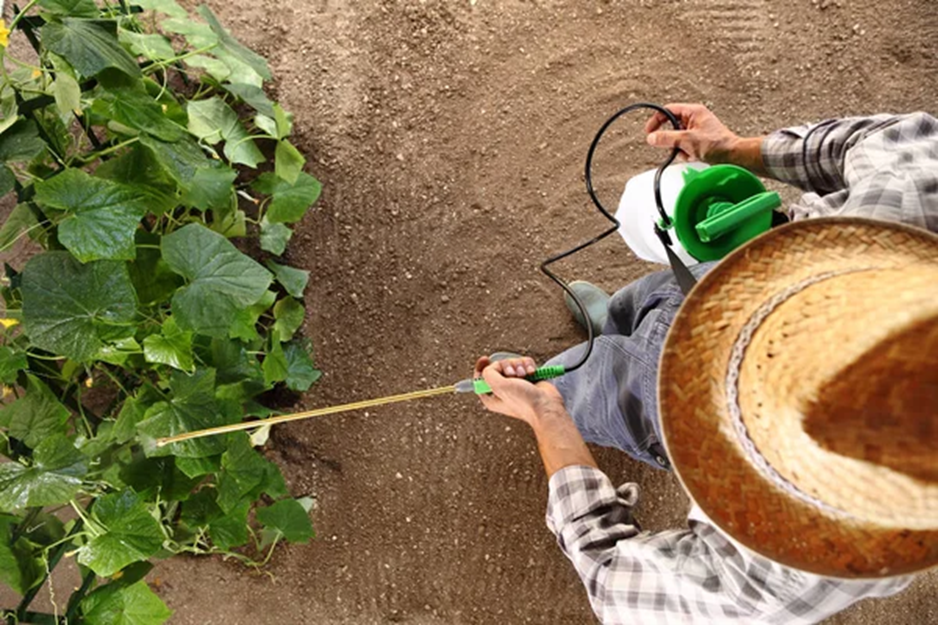
Best to confine your use of this spray to the leaves of plants you don’t want to eat. I’m going to see if it dissuades the ravenous Japanese beetles from gnawing on my grapevines this season.
Store unused spray in a clearly-marked bottle in the refrigerator. It should keep for a few days. - DIY FABRIC DYE. Rhubarb leaves yield a yellow-green color that can be used for home dyeing projects, while their acidity provides a built-in mordant, helping to fix the dye to the fiber.
To make a rhubarb leaf dye, simmer cut up leaves in water for about an hour. Use roughly half as much leaf by weight as the fiber you plan to dye (i.e., 1 pound leaf for 2 pounds of yarn). Longer simmering should yield a darker dye.
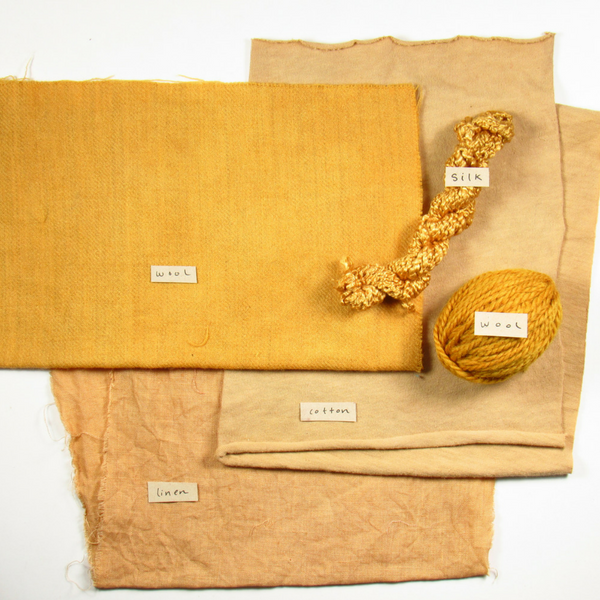
Allow to cool and strain the leaf matter out before dyeing your yarn or cloth. (Find out more about using natural dyes and mordants in A GARDEN TO DYE FOR by Chris McLaughlin.) - Last, LEAF CAST STEPPING STONES OR BIRD BATHS. You can use those enormous, pretty leaves to make attractive casts that can become stepping stones or bird baths in the garden. Here’s a video tutorial for making a rhubarb leaf cast for a bird bath. And www.gardentherapy.com has a tutorial for making stepping stones from leaves.
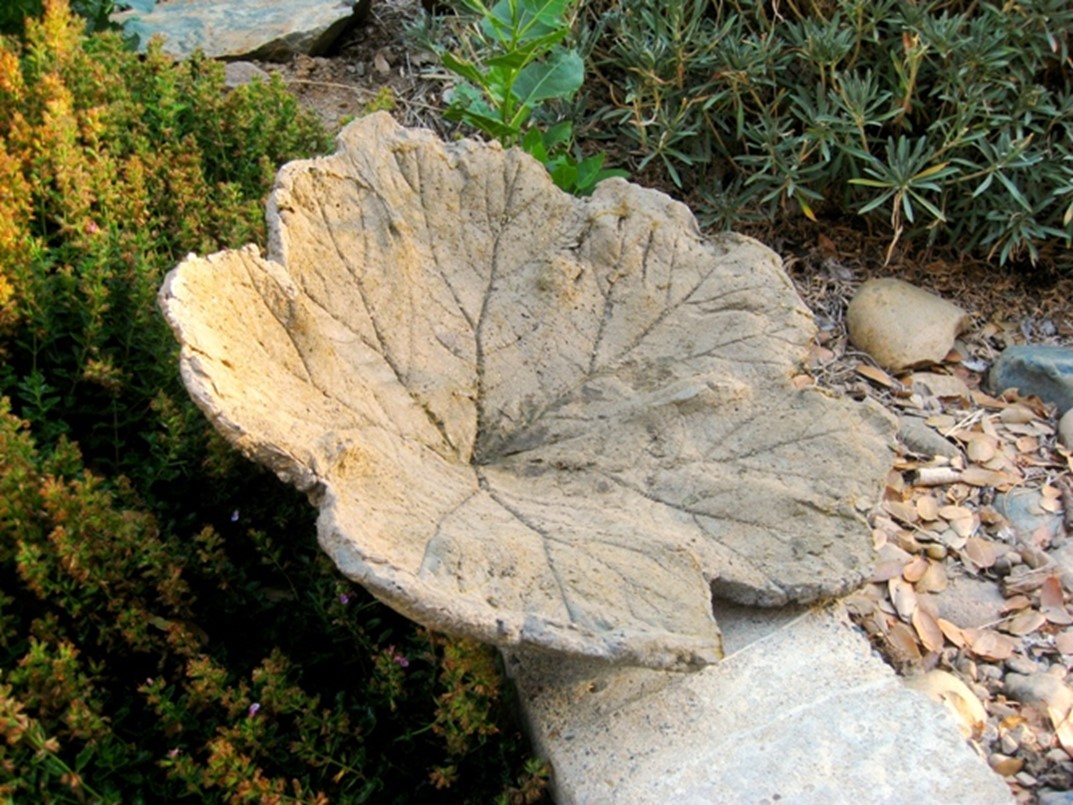
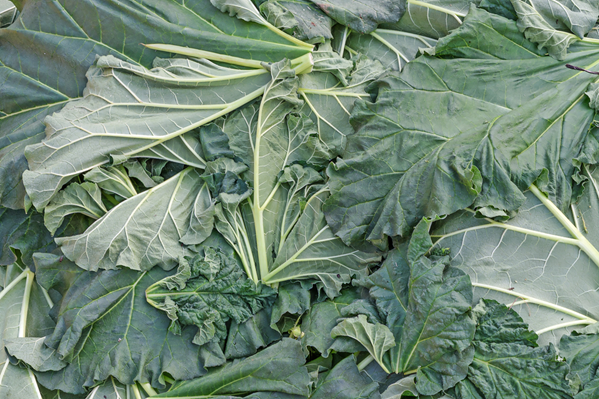
 Alice Osborne
Alice Osborne
Weekly Newsletter Contributor since 2006
Email the author! alice@dvo.com
